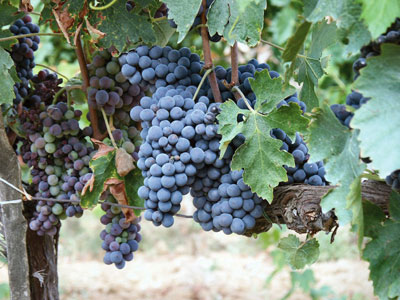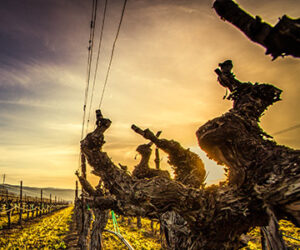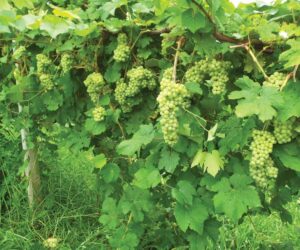 Literally spoken, creating Chianti in the United States is not possible. Chianti is a style of wine that can only be derived from specific grapes grown in a specific area (in Chianti in Tuscany, Italy) and vinified under a strict set of laws. However, the primary grape used to make Chianti, Sangiovese, is a delicate and expressive grape that is now grown and produced in California. We are now only beginning to learn its growth and maturation tendencies in the vineyard and cellar.
Literally spoken, creating Chianti in the United States is not possible. Chianti is a style of wine that can only be derived from specific grapes grown in a specific area (in Chianti in Tuscany, Italy) and vinified under a strict set of laws. However, the primary grape used to make Chianti, Sangiovese, is a delicate and expressive grape that is now grown and produced in California. We are now only beginning to learn its growth and maturation tendencies in the vineyard and cellar.
At Viansa Winery in Sonoma, Calif., we continue to refine our vineyard practices and enological techniques vintage by vintage. As a grape, Sangiovese works well with our philosophy of combining the traditional Italian winemaking style with modern California methods. Harvesting Sangiovese from several different appellations including Carneros, Amador County, Napa Valley, Central Coast, and Santa Clara County has allowed us to see how fermentation and aging affect each vineyard lot. Sangiovese grapes from these vineyards differ in many aspects, including color extraction, sugar content, tannin structure, and the rate at which the wine softens when aging in barrels, making each wine unique.
Our goal is to produce wines with wonderful varietal character that will require minimal blending to achieve a rich, soft, and incredibly bright flavor and aroma profile. To preserve and bring out the truly expansive range of characteristics such as bubble-gum, candied cherry, bing cherry, mint, eucalyptus, tea, cedar, tobacco, blackberry, raspberry, cinnamon, and strawberry (to name a few), we implement several unique winemaking techniques. After many years of refining our blends, we find that our Sangiovese has a long, lingering finish due to good acids, bright fruit flavors and aromas, yet could have slightly more pronounced fleshy mouthfeel. To create a Sangiovese with great complexity we have found that anywhere from 5 percent to 10 percent Cabernet Franc or Charbono lends the final blend its fleshy, rich body.
Beginning with fruit that is ripe (24.5° to 25° Brix) and cool (50° to 55° F) is essential to ensure a great 48-hour cold soak. Harvesting our fruit in the early morning gives us our cold-fruit temperature, perfectly setting up conditions for early maceration. Our cold soak essentially allows our fruit to lend its color in the skins to the juice without microbial intervention. If you add yeast to warm fruit that has just been harvested, fermentation could finish so fast that you could be pressing skins with a lot of available color left. When yeast is added and temperatures rise or spontaneous natural fermentation occurs, color is extracted fast, usually within 48 hours. Keeping an anaerobic environment (by applying a CO2 blanket over the must in the tank) helps avoid microbial spoilage organisms and wild yeast fermentation (which may not complete primary due to the ethanol level inevitable with such ripe fruit).
We then inoculate with yeast and perform the most crucial Old World technique called “capello sommerso,” which means submerged cap. Screens have been customized to fit inside our 337-gallon stainless fermenters. When screwed down into position, these screens keep the skins constantly submerged in the fermenting juice. We generally see maximum color extraction within 48 hours post-inoculation and a soft tannin structure due to the skin and seed breakdown.
After pressing, we put our free run in puncheons (500-liter barrels) and the press wine in standard Bordeaux barrels (225 liters). The puncheons are perfect for their limited oxidation and their more subtle oak extraction, while the smaller barrels aid in settling and oxidation of the slightly more harsh press wine.
Our underground cellar provides perfect temperatures (55° to 60° F) for a long, slow malo-lactic fermentation and quick settling of solids. We rack our wines twice and enjoy the natural settling via gravity, which also clarifies the wine enough to avoid fine filtration prior to bottling.
While modern equipment makes life easier, the use of the submerged cap actually makes fermentation monitoring and maintenance extremely easy. When making Sangiovese, the smaller the lot, the more control we have. Sangiovese needs aggressive, early maceration for color; constant submerging for maximum tannin extraction; and long, cool malo-lactic fermentation conditions. Fast fermentation, fast malo-lactic fermentation, and no maceration program will yield —though very fruity and nice — blush wine. The softer the extraction method, the softer the wine, and settling is easily done by gravity.
Being a producer of many varietals, we have the luxury of blending to fill in voids or accentuate the positive attributes of a wine. However, we hope to continue along the lines of making a super Sangiovese not by blending but by working with the grape itself and using gentle winemaking techniques that have made excellent Sangiovese for centuries.







